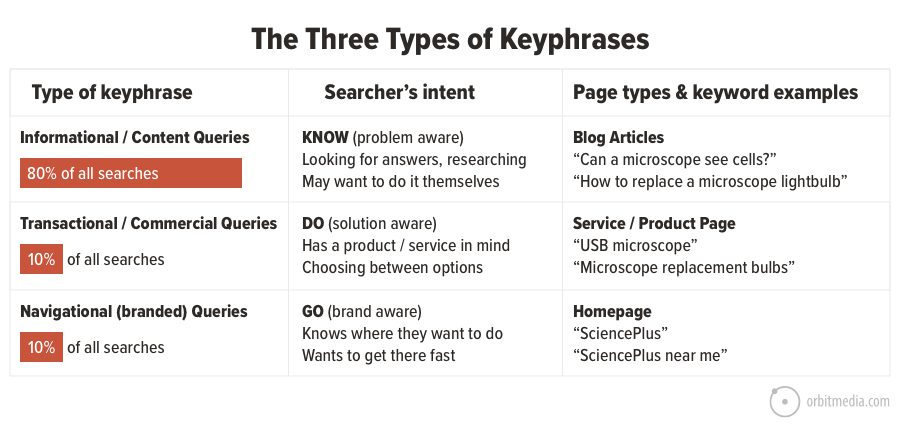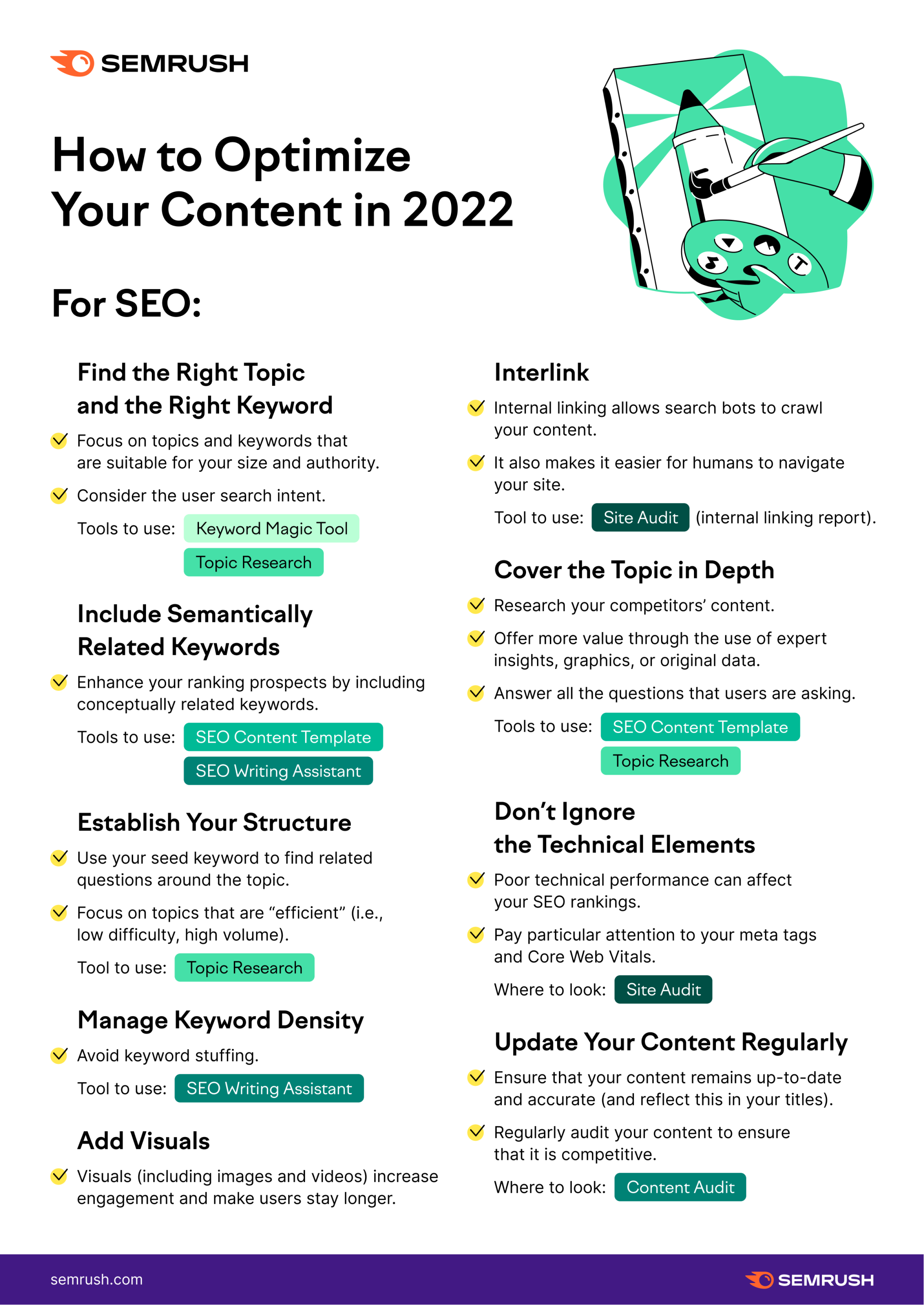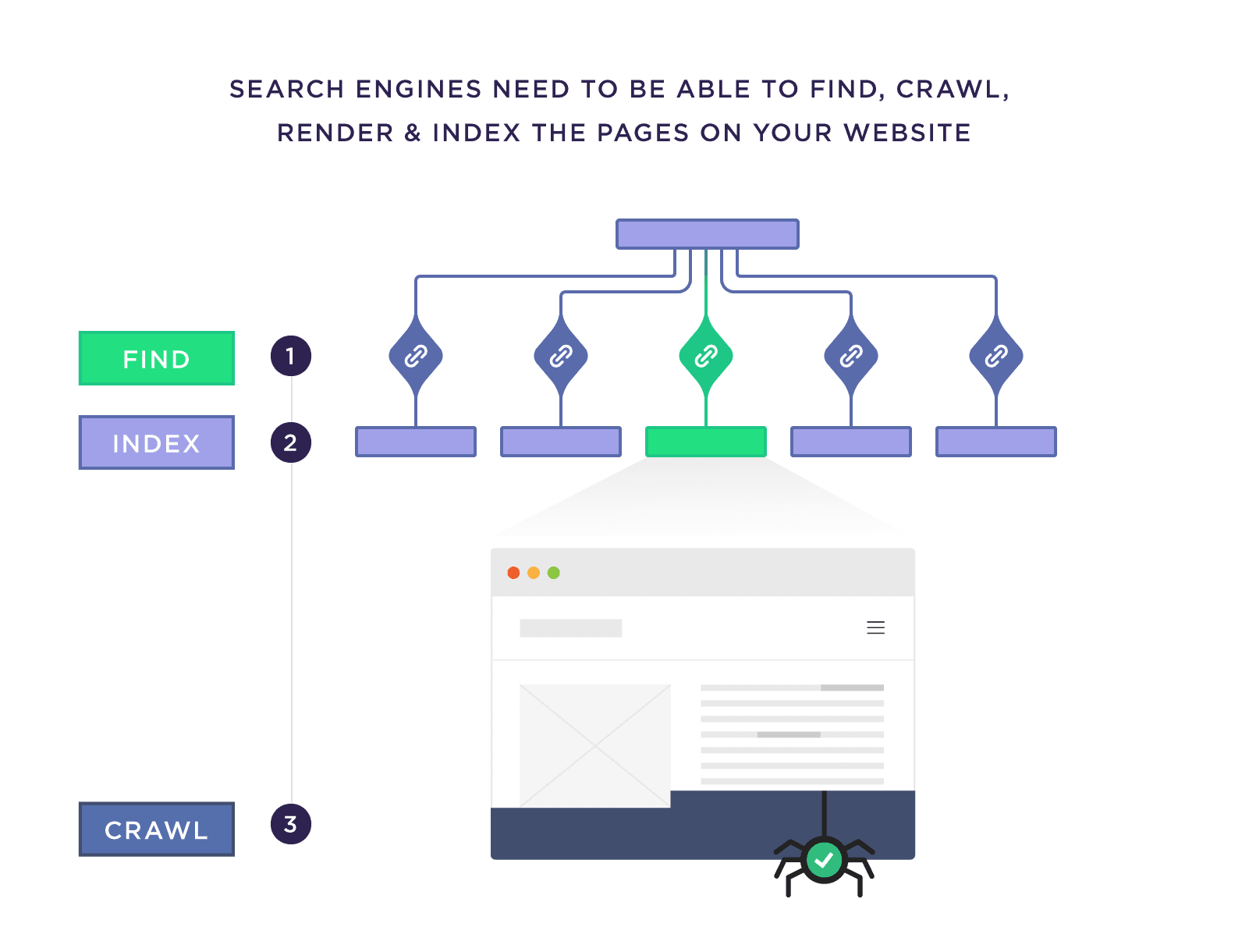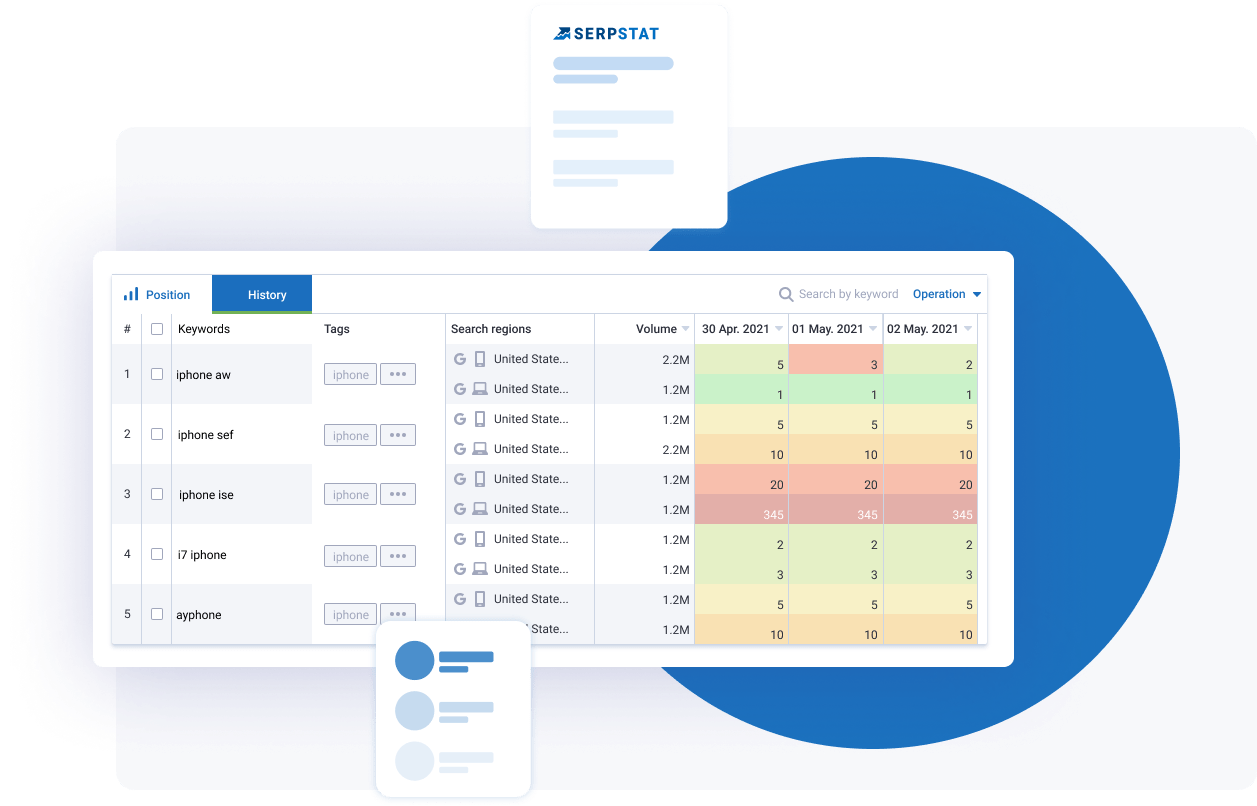Here is a general SEO plan for a new website:
- Choose the right keywords: Identify the keywords that you want to target with your website. Use tools like Google’s Keyword Planner or Ahrefs to research the volume and difficulty of different keywords.
- Optimize your website’s content: Use your targeted keywords in the title tags, headings, and body content of your website. Make sure your content is high-quality, useful, and informative, and use header tags to break up the content and make it easier to read.
- Improve your website’s technical SEO: Ensure that your website is fast, mobile-friendly, and easy to navigate. Use tools like Google’s PageSpeed Insights and Mobile-Friendly Test to identify any technical issues and optimize your website accordingly.
- Build high-quality backlinks: Backlinks from other reputable websites can help improve your website’s authority and search engine rankings. Focus on building high-quality backlinks from authoritative websites in your industry.
- Monitor and track your progress: Use tools like Google Analytics and Ahrefs to track your website’s traffic and search engine rankings. Monitor your progress over time and adjust your strategy as needed.
It’s important to note that SEO is a long-term strategy and it can take time to see results. It’s a good idea to be patient and consistently work on improving your website’s SEO over time.
Elaborating Every Step For Better Understanding
here is a more detailed explanation of each step in the SEO plan for a new website:
- Choose the right keywords: Keywords are phrases and terms that people use when searching for information online. Identifying the right keywords to target with your website is an important step in SEO. You can use tools like Google’s Keyword Planner or Ahrefs to research the volume and difficulty of different keywords. Choose keywords that are relevant to your business and that have a good balance of high volume and low competition.
- Optimize your website’s content: Once you have identified your targeted keywords, it’s important to optimize your website’s content to include those keywords. Use your targeted keywords in the title tags, headings, and body content of your website. Make sure your content is high-quality, useful, and informative, and use header tags (H1, H2, etc.) to break up the content and make it easier to read.
- Improve your website’s technical SEO: In addition to optimizing your website’s content, it’s important to ensure that your website is fast, mobile-friendly, and easy to navigate. This can help improve your website’s search engine rankings and user experience. Use tools like Google’s PageSpeed Insights and Mobile-Friendly Test to identify any technical issues and optimize your website accordingly.
- Build high-quality backlinks: Backlinks are links from other websites that point to your website. Backlinks from reputable websites can help improve your website’s authority and search engine rankings. Focus on building high-quality backlinks from authoritative websites in your industry. You can use tools like Ahrefs to identify potential backlink opportunities and track your progress.
- Monitor and track your progress: Use tools like Google Analytics and Ahrefs to track your website’s traffic and search engine rankings. Monitor your progress over time and adjust your strategy as needed. This can help you identify areas where you need to improve and ensure that you are making progress toward your SEO goals.
It’s important to note that SEO is a long-term strategy and it can take time to see results. It’s a good idea to be patient and consistently work on improving your website’s SEO over time.
some important tips for keyword research

Here are some important tips for conducting keyword research:
- Identify your target audience: It’s important to understand who your target audience is and what they are searching for. This can help you identify the most relevant and valuable keywords to target.
- Use a variety of keyword research tools: There are many tools available that can help you research and identify the right keywords to target, such as Google’s Keyword Planner, Ahrefs, and SEMrush. These tools can provide you with data on the volume and difficulty of different keywords, as well as related keywords and phrases.
- Consider the intent behind a keyword: When selecting keywords, consider the intent behind the search. For example, someone searching for “best running shoes” may be looking to make a purchase, while someone searching for “how to start running” may be looking for information. Targeting keywords with different types of intent can help you reach a wider audience.
- Use long-tail keywords: Long-tail keywords are more specific and often have lower competition than shorter, more general keywords. They can be more effective at driving targeted traffic to your website.
- Monitor and track your keywords: It’s important to track the performance of your keywords over time to see which ones are driving the most traffic and conversions. Use tools like Google Analytics and Ahrefs to monitor and track your keywords, and adjust your strategy as needed.
step by step guideline for optimizing website content

Here is a step-by-step guideline for optimizing website content:
- Identify your target keywords: Begin by identifying the keywords that you want to target with your website content. Use tools like Google’s Keyword Planner or Ahrefs to research the volume and difficulty of different keywords.
- Write high-quality content: Next, write high-quality, useful, and informative content that covers the topics and keywords that you are targeting. Make sure to use your target keywords in the title, headings, and body content of your website.
- Use header tags: Use header tags (H1, H2, etc.) to break up the content and make it easier to read. Use your target keywords in the header tags to signal to search engines the main topics of your content.
- Use internal and external links: Linking to other relevant pages on your website and to external sources can help improve the authority and credibility of your content.
- Optimize images and videos: Use descriptive, keyword-rich file names for images and videos, and include alt text to describe the content. This can help improve the visibility of your content in search results.
- Use meta tags: Include meta tags such as the title tag and meta description tag to provide additional context and information about your content to search engines. Make sure to use your target keywords in these tags.
- Monitor and track your progress: Use tools like Google Analytics and Ahrefs to track your website’s traffic and search engine rankings. Monitor your progress over time and adjust your strategy as needed.
How can anyone improve a website’s technical SEO

Here are some ways to improve a website’s technical SEO:
- Improve page loading speed: Slow page loading speed can negatively impact your website’s search engine rankings and user experience. Use tools like Google’s PageSpeed Insights to identify areas where you can improve your website’s loading speed, such as by optimizing images and reducing the number of redirects.
- Make your website mobile-friendly: More and more people are using their phones to access the internet, so it’s important to ensure that your website is mobile-friendly. Use tools like Google’s Mobile-Friendly Test to identify any issues with your website’s mobile usability, and make the necessary changes.
- Use a clear and easy-to-navigate website structure: A clear and easy-to-navigate website structure can help improve the user experience and make it easier for search engines to crawl and index your website. Use a hierarchical structure, with a clear hierarchy of categories and subcategories, and use descriptive, keyword-rich page titles and URLs.
- Use a sitemap: A sitemap is a file that lists all the pages on your website and helps search engines understand the structure and organization of your content. It’s a good idea to create and submit a sitemap to search engines to help them better understand your website.
- Use SSL: SSL (Secure Sockets Layer) is a security protocol that encrypts data sent between a website and a user’s browser. Using SSL can help protect sensitive information and improve the security of your website. In addition, Google has stated that websites using SSL may receive a small ranking boost in search results.
- Use structured data: Structured data is a standardized format for providing information about a webpage to search engines. Using structured data can help improve the visibility of your website in search results, especially for rich snippets and featured snippets.
- Use a robots.txt file: A robots.txt file is a file that tells search engines which pages or files they should or should not crawl. It’s a good idea to create a robots.txt file to help search engines understand which pages on your website are important and which ones you don’t want to be indexed.
- Use a CDN: A CDN (Content Delivery Network) is a network of servers that delivers web content based on the geographic location of the user. Using a CDN can help improve the loading speed of your website, especially for users located far from your server.
- By improving your website’s technical SEO, you can help improve its search engine rankings and user experience. It’s important to regularly audit your website and identify areas where you can improve its technical SEO.
Some tips and guidelines for building high-quality backlinks
Here are some tips and guidelines for building high-quality backlinks:
- Focus on building backlinks from authoritative websites: Backlinks from reputable and authoritative websites can have a greater impact on your search engine rankings than backlinks from low-quality or spammy websites.
- Use a mix of dofollow and nofollow links: Dofollow links are links that pass along “link juice” and can help improve your search engine rankings, while Nofollow links do not pass along link juice and are generally used to indicate sponsored or paid content. It’s a good idea to use a mix of both dofollow and nofollow links to diversify your link profile.
- Avoid buying backlinks: Buying backlinks can be tempting, but it’s generally not a good idea. Search engines can easily detect purchased links and may penalize your website as a result.
- Build relationships with other websites: Building relationships with other websites and bloggers in your industry can be a good way to naturally acquire backlinks. You can reach out to other websites and offer guest posts, participate in roundups or interviews, or simply offer valuable content that they may want to link to.
- Create high-quality, shareable content: Creating high-quality, useful, and informative content that is valuable to your target audience can naturally attract backlinks. If your content is good, people will want to share it and link to it.
- Monitor and track your backlinks: It’s important to regularly monitor and track your backlinks to ensure that they are high-quality and that you are not acquiring any low-quality or spammy links. You can use tools like Ahrefs or SEMrush to track your backlinks and identify any issues.
How can anyone monitor and track websites perfectly?

Here are some ways to monitor and track your website’s performance:
- Use Google Analytics: Google Analytics is a free tool that provides a wealth of data on your website’s traffic, including information on where your visitors are coming from, how long they are staying on your site, and what pages they are visiting.
- Use other analytics tools: In addition to Google Analytics, there are other analytics tools available that can provide additional data on your website’s performance. Tools like Ahrefs, SEMrush, and Hotjar can provide information on your website’s search engine rankings, backlinks, and user behavior.
- Monitor your website’s traffic: Regularly check your website’s traffic to see how many visitors it is receiving and where they are coming from. This can help you identify trends and patterns in your website’s traffic.
- Monitor your website’s search engine rankings: Use tools like Ahrefs or SEMrush to monitor your website’s search engine rankings for specific keywords. This can help you track your progress and identify any areas where you need to improve.
- Monitor your website’s backlinks: Use tools like Ahrefs or SEMrush to track your website’s backlinks and identify any low-quality or spammy links. It’s important to regularly monitor your backlinks to ensure that they are high-quality and to remove any low-quality links.
- Monitor your website’s user experience: Use tools like Hotjar or Google Analytics to track your website’s user experience, including how long users are staying on your site, what pages they are visiting, and what actions they are taking. This can help you identify any issues and make improvements to your website.
How to audit a website?
Here is a general process for conducting a website audit:
- Identify your goals and objectives: Begin by identifying your goals and objectives for the website audit. What do you hope to achieve? Are you looking to improve your website’s search engine rankings, user experience, or something else?
- Gather data: Next, gather data on your website’s performance. This may include data on your website’s traffic, search engine rankings, backlinks, and user behavior. Use tools like Google Analytics, Ahrefs, and SEMrush to gather this data.
- Analyze your data: Once you have gathered your data, analyze it to identify any issues or areas for improvement. Look for trends and patterns in your data, and pay particular attention to any areas that are performing poorly.
- Identify areas for improvement: Based on your analysis, identify the areas of your website that need the most improvement. This may include issues with your website’s content, technical SEO, backlinks, or user experience.
- Develop a plan of action: Based on your identified areas for improvement, develop a plan of action to address those issues. This may involve making changes to your website’s content, improving its technical SEO, building new backlinks, or making changes to improve the user experience.
- Implement your plan of action: Put your plan of action into action by making the necessary changes to your website.
- Monitor and track your progress: Use tools like Google Analytics and Ahref or SEMrush to monitor and track your website’s performance over time. This will help you see the impact of your changes and identify any areas where you may need to make further improvements.
- Repeat the process: Website audits should not be a one-time event. It’s important to regularly audit your website to identify any new issues and make ongoing improvements. Set a schedule for repeating the audit process, and make sure to allocate the necessary resources to address any issues that are identified.
- By conducting regular website audits, you can identify and address any issues that may be holding your website back, and help improve its performance and user experience.